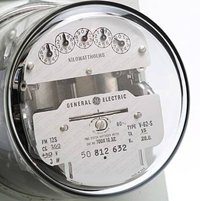The main argument conservatives and big oil and coal companies use against the American Clean Energy and Security Act (H.R. 2454) is that it would cripple American households with a crushing energy tax. To make that claim, they have distorted cost estimates from the Massachusetts Institute of Technology and conducted their own biased studies. Today, the Environmental Protection Agency obliterated these phony numbers with the release of its economic analysis of H.R. 2454. The EPA estimated the bill would actually lower household electricity bills:
As a result of energy efficiency measures, consumer spending on utility bills would be roughly 7% lower in 2020 as a result of the legislation.
Secure · Tax deductible · Takes 45 SecondsSecure · Tax deductible · Takes 45 Seconds
That’s right — lower bills. In 2007, this would have saved the average residential user $84, or 23 cents per day. EPA’s analysis also found:
The overall impact on the average household, including the benefit of many of the energy efficiency provisions in the legislation, would be 22 to 30 cents per day ($80 to $111 per year).
We don’t have to just wish we were there — we can have a clean energy economy for the cost of a postcard stamp a day. And the EPA’s analysis does not “take into account the benefits of reducing global warming.”
EPA’s findings are consistent with the independent Congressional Budget Office analysis released on June 19th. CBO determined “that the net annual economywide cost of the cap-and-trade program in 2020 would be $22 billion—or about $175 per household.” CBO did not evaluate the impact of the energy efficiency measures on consumer spending on utilities.
The bottom line is that independent analyses found that ACES would cut spending on utilities, as well as have minimal overall costs to the average household – somewhere between 22 to 48 cents a day. Hopefully, representatives will pay heed to these government studies and ignore conservatives’ counterfeit estimates when they vote on the American Clean Energy and Security Act this Friday.
Update: Some more facts from the EPA analysis:
The bill would also spur investments in renewable electricity from the wind, sun and other sources. EPA projects:
Roughly 65% of the new generation built by 2025 will be renewable…Billions of dollars will be directed to states so that each state can create homegrown clean energy jobs.
EPA also found that the bill would benefit farmers by creating a domestic offset market “worth at least $4 billion annually through 2030.”




